In today's digital landscape, having an online portfolio is crucial for professionals and creatives to showcase their skills, experiences, and achievements. This article explores the top 10 tools to help you create an impressive digital portfolio in 2024:
| Tool | Description |
|---|---|
| Wix | Drag-and-drop editor, template library, built-in SEO tools |
| Adobe Express | High-quality design elements, templates, branding features |
| Squarespace | Beautiful pre-made templates, ideal for artistic portfolios |
| GoDaddy | Affordable, beginner-friendly, marketing and SEO capabilities |
| WordPress | Highly customizable, large community and support |
| Webflow | Design flexibility, advanced customization, coding skills required |
| Notion | Flexible workspace for organizing and showcasing projects |
| Behance | Platform for creatives to share work and connect with clients |
| Dribbble | Community for designers to showcase work and get feedback |
| Carbonmade | Simple and clean portfolio platform for creatives |
To keep your portfolio current and effective, regularly update it every 3-6 months or more frequently if you have multiple projects. Only add your best work, use a consistent layout, and ensure it's mobile-friendly. Seek feedback to identify areas for improvement.
| Reason to Update | Description |
|---|---|
| Showcase Growth | Reflect new skills and knowledge gained |
| Highlight Achievements | Feature recent projects and accomplishments |
| Stay Relevant | Demonstrate active engagement in your field |
Having an online portfolio is essential for showcasing your expertise, work, and connecting with potential employers or clients. By following the tips and guidelines in this article, you can create a portfolio that truly represents your skills and achievements.
Related video from YouTube
How We Chose These Tools
We carefully evaluated various digital portfolio tools to find the best options for professionals and creatives in 2024. Our selection process involved analyzing each tool's features, pricing, user-friendliness, and industry-specific considerations.
First, we identified the needs of our target audience, including the types of projects they work on, the industries they operate in, and the level of customization they require. We then researched and shortlisted tools that cater to these needs, focusing on those that offer a range of features, templates, and integrations to support diverse projects and workflows.
Next, we assessed the user experience of each tool, considering factors such as ease of use, navigation, and overall usability. We also evaluated the pricing models, taking into account the cost-benefit ratio and the value provided to users.
Finally, we considered industry-specific factors, such as the tool's compatibility with various devices and platforms, its scalability, and its ability to integrate with other tools and services. By evaluating these factors, we were able to identify the top digital portfolio tools that meet the needs of professionals and creatives in 2024.
Key Evaluation Criteria
| Criteria | Description |
|---|---|
| Features | Assessing the range of features, templates, and integrations offered by each tool. |
| User Experience | Evaluating the ease of use, navigation, and overall usability of the tool. |
| Pricing | Analyzing the pricing models and the cost-benefit ratio for users. |
| Industry Compatibility | Considering the tool's compatibility with various devices, platforms, and industry-specific requirements. |
| Scalability | Assessing the tool's ability to grow and adapt to changing needs over time. |
| Integrations | Evaluating the tool's ability to integrate with other tools and services used by professionals and creatives. |
Top 10 Digital Portfolio Tools
Here are the top 10 tools to help you create an impressive online portfolio in 2024:
1. Wix

Wix offers a user-friendly drag-and-drop editor, a vast template library, customization options, and built-in SEO tools. It's a versatile choice for various digital portfolios. Pricing ranges from free to premium plans.
| Advantages | Drawbacks |
|---|---|
| Easy-to-use drag-and-drop interface | Advanced features require paid plans |
| Extensive template selection | Steeper learning curve for beginners |
2. Adobe Express
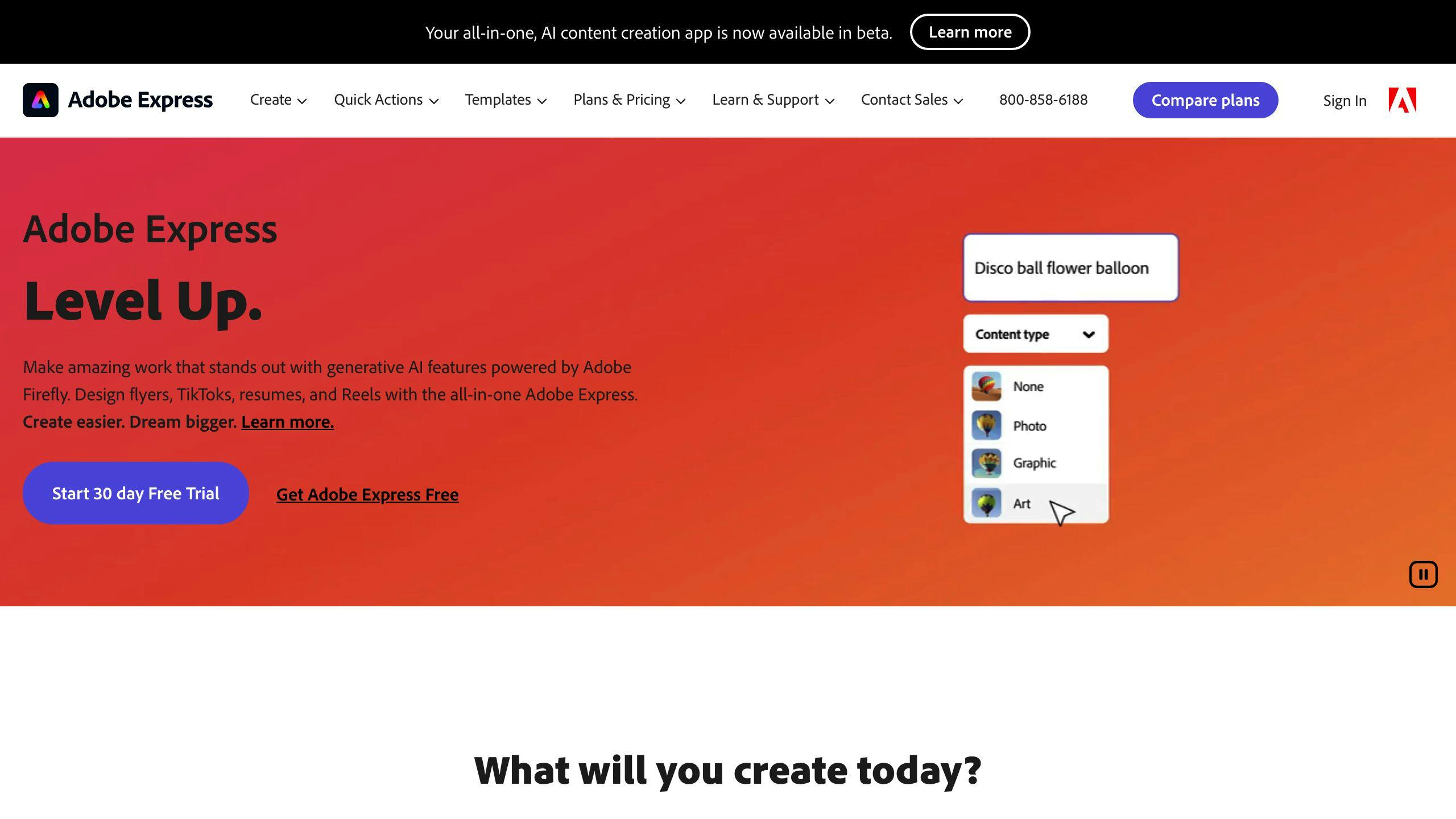
Adobe Express is ideal for creatives seeking high-quality design elements. It allows you to create professional-looking portfolios with various templates and branding features. Free with additional premium options.
| Advantages | Drawbacks |
|---|---|
| High-quality, customizable templates | Limited functionality in the free version |
| Integrates with Adobe Creative Cloud | Some learning curve for new users |
3. Squarespace

Squarespace excels at artistic portfolios, offering beautiful pre-made templates and a drag-and-drop interface. Various pricing plans available.
| Advantages | Drawbacks |
|---|---|
| Award-winning designs | More expensive than some other builders |
| Good customization options | Can be slow for media-heavy sites |
4. GoDaddy
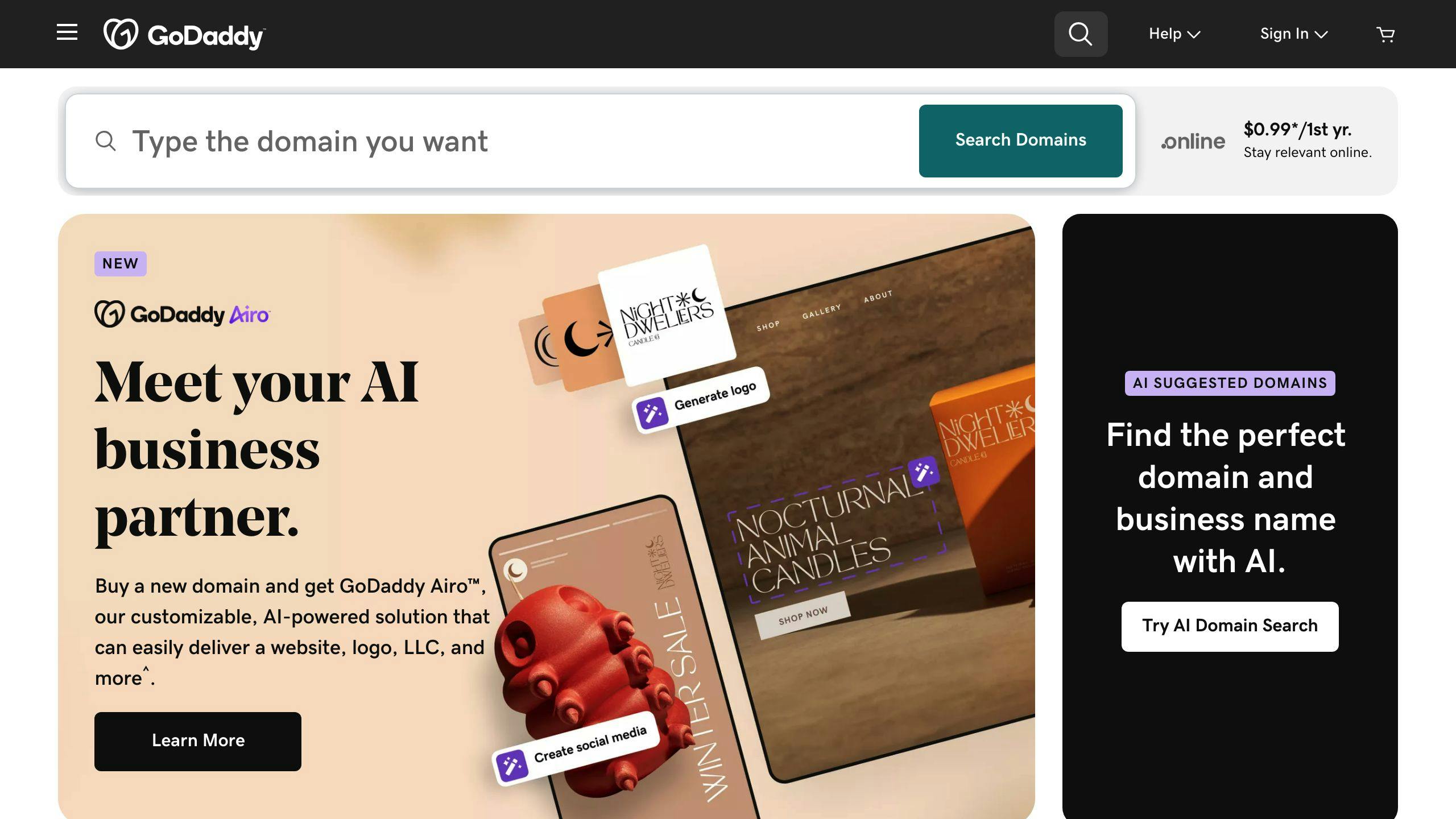
GoDaddy is a good choice for marketing portfolios, with an affordable starting price of $10.99 per month. It's beginner-friendly with the ADI website builder and offers good marketing and SEO capabilities on higher plans.
| Advantages | Drawbacks |
|---|---|
| Affordable | Limited customization options |
| Beginner-friendly | Requires higher plans for better SEO features |
5. WordPress
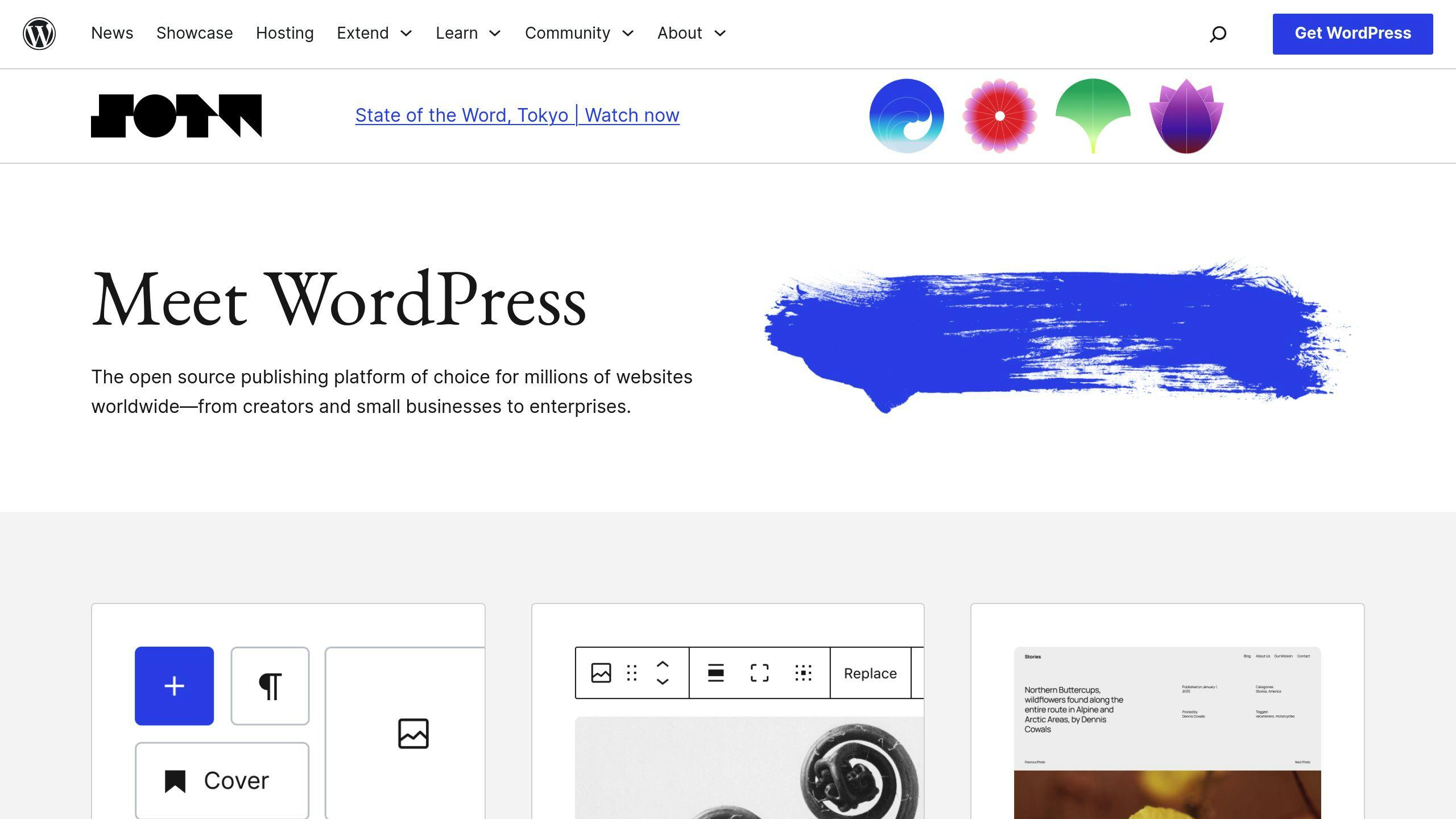
WordPress is suitable for all types of digital portfolios, especially those requiring advanced customization. Various plans are available, from free to premium.
| Advantages | Drawbacks |
|---|---|
| Highly customizable | Can be complex for beginners |
| Large community and support | Often requires additional costs (plugins, themes) |
6. Webflow
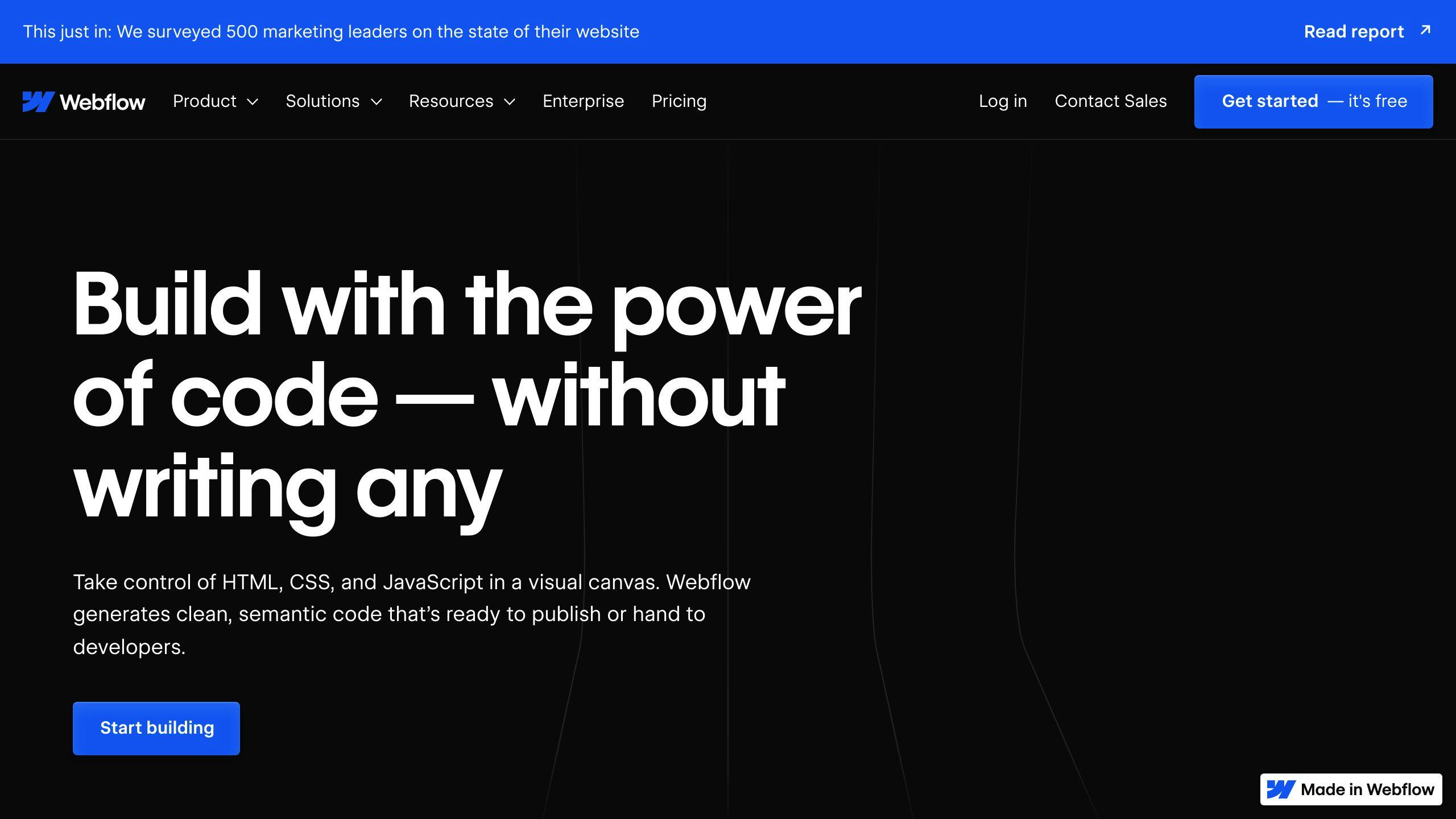
Webflow offers design flexibility and advanced customization, suitable for users comfortable with coding. Various pricing plans are available.
| Advantages | Drawbacks |
|---|---|
| Advanced customization | Steep learning curve |
| Extensive template library | More expensive than simpler builders |
7. Notion

Notion is not a dedicated portfolio builder, but a powerful option for creative professionals who want a flexible workspace to organize and showcase their work.
| Advantages | Drawbacks |
|---|---|
| Versatile workspace for organizing projects | Not a dedicated portfolio platform |
| Customizable templates and databases | Limited design options for portfolios |
8. Behance

Behance is a popular platform for creative professionals to showcase their work and connect with potential clients or employers.
| Advantages | Drawbacks |
|---|---|
| Free to use | Limited customization options |
| Large creative community | Not a standalone portfolio website |
9. Dribbble
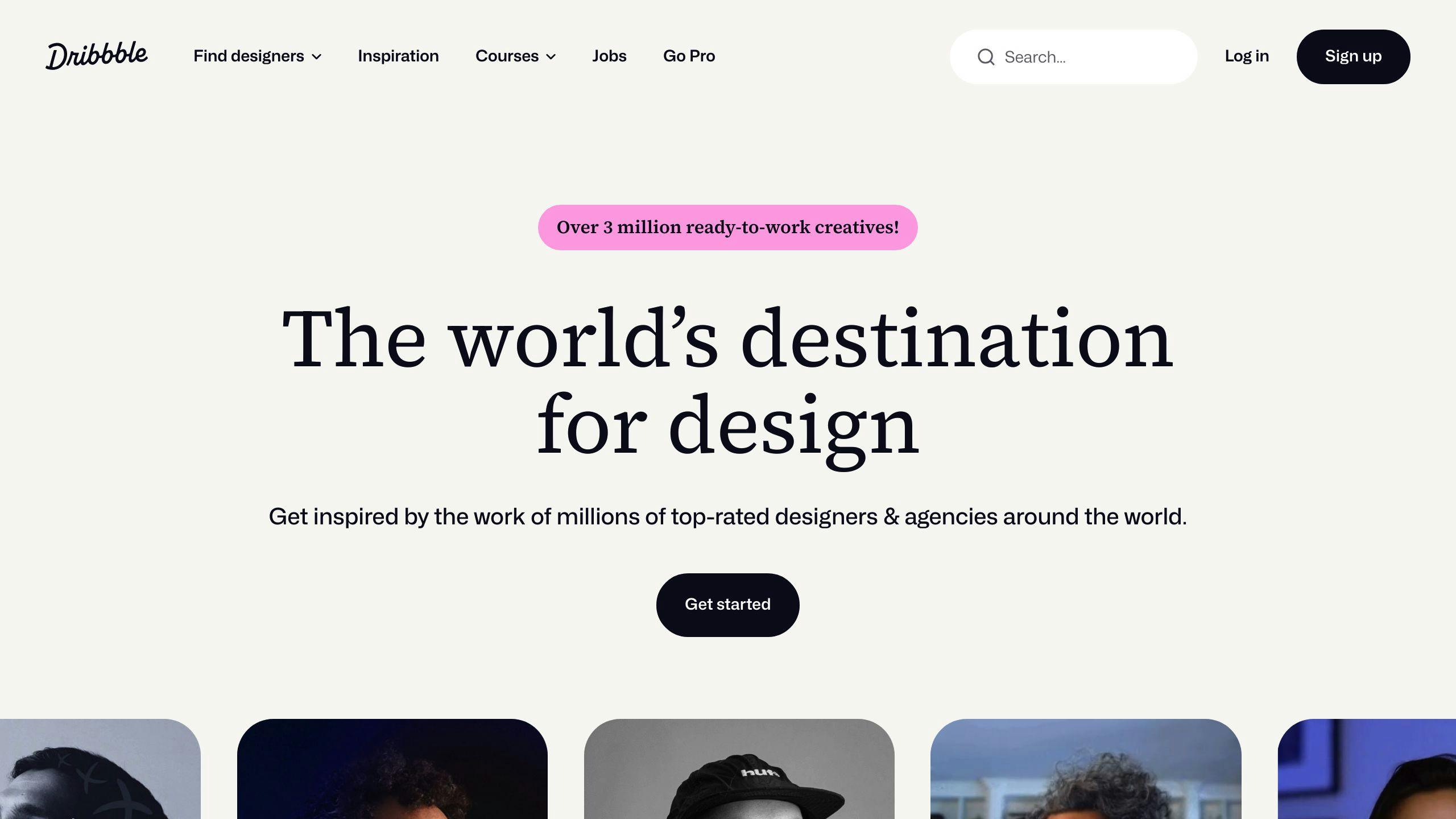
Dribbble is a community for designers and creatives to share their work, get feedback, and find job opportunities.
| Advantages | Drawbacks |
|---|---|
| Exposure to a large design community | Not a standalone portfolio website |
| Opportunity to receive feedback | Limited customization options |
10. Carbonmade
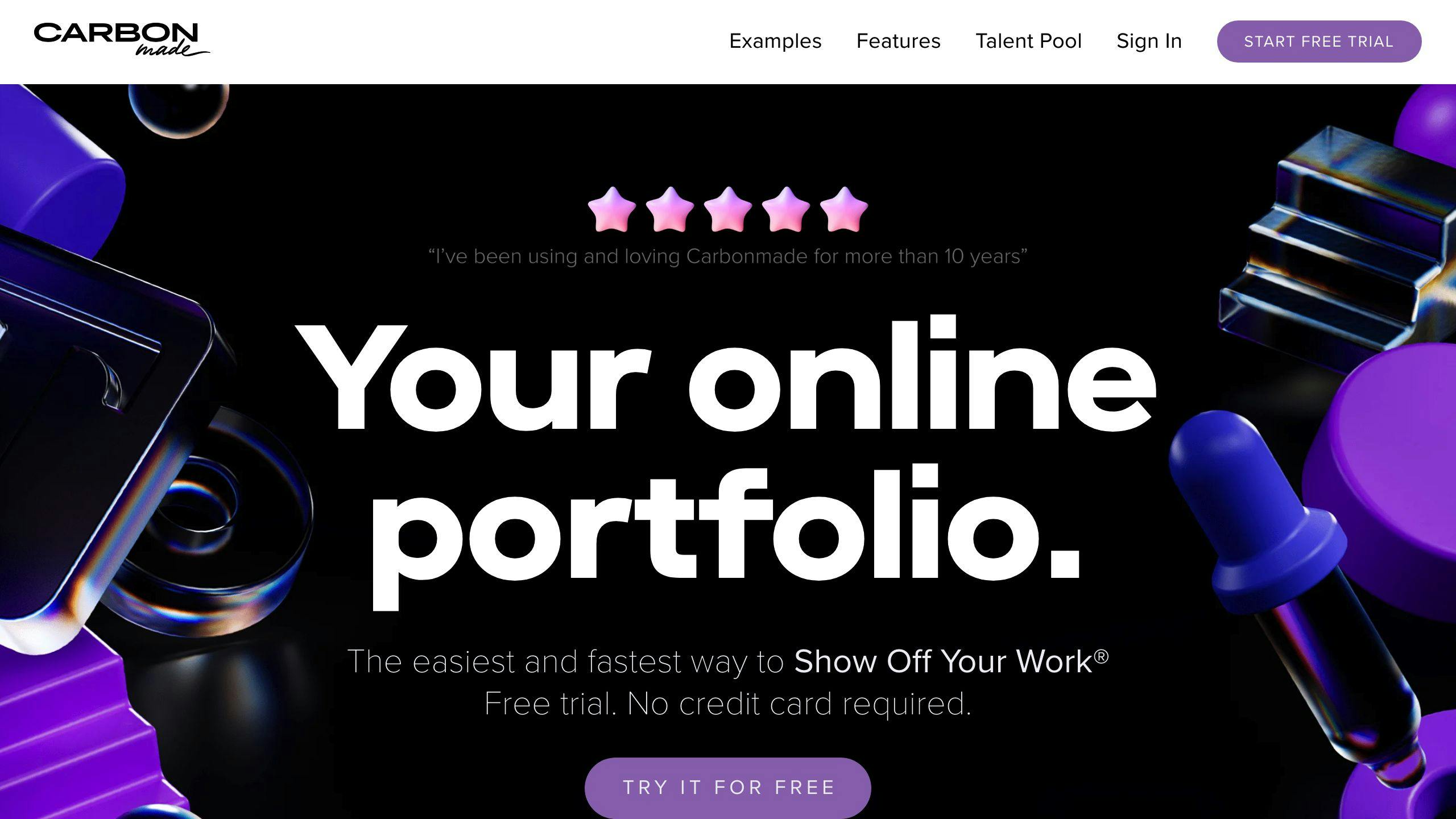
Carbonmade is a simple and clean portfolio platform designed specifically for creatives to showcase their work.
| Advantages | Drawbacks |
|---|---|
| Clean and minimalist design | Limited customization options |
| Easy to set up and update | Fewer features than some other builders |
sbb-itb-b0d1ece
Keeping Your Portfolio Current
Your digital portfolio is a living showcase of your skills and achievements. To make the most impact, you need to keep it updated regularly. This section covers why it's important to maintain a fresh portfolio and how to effectively present your latest work.
Why Update Your Portfolio?
An outdated portfolio gives the impression that you're not actively working on projects or improving your skills, which can hurt your career prospects. Keeping your portfolio current:
- Reflects your growth and new skills
- Highlights your recent accomplishments
- Shows you're actively engaged in your field
How Often to Update
The ideal update frequency depends on your industry, workload, and goals. As a general guideline:
- Update every 3-6 months
- Freelancers or those with multiple projects may need to update more often
Tips for Effective Updates
-
Quality over quantity: Only add your best work. Remove outdated or low-quality pieces.
-
Stay organized: Use a consistent layout and categorize your work for easy navigation.
-
Tell a story: Add context with descriptions, goals, and outcomes to show your thought process.
-
Mobile-friendly navigation: Ensure your portfolio is easy to navigate on any device.
-
Seek feedback: Ask colleagues or mentors for input to identify areas for improvement.
| Reason to Update | Description |
|---|---|
| Showcase Growth | Reflect new skills and knowledge gained |
| Highlight Achievements | Feature recent projects and accomplishments |
| Stay Relevant | Demonstrate active engagement in your field |
Final Thoughts
Having an online portfolio is crucial for showcasing your skills and work to potential employers or clients. With the right tools, you can create a professional portfolio that stands out and increases your chances of landing your dream job or project.
The top 10 tools mentioned in this article offer various features to help you build an engaging digital portfolio. From user-friendly website builders like Wix and Squarespace to platforms tailored for creatives like Behance and Dribbble, there's an option to suit different needs and preferences.
| Tool | Description |
|---|---|
| Wix | Drag-and-drop editor, template library, built-in SEO tools |
| Adobe Express | High-quality design elements, templates, branding features |
| Squarespace | Beautiful pre-made templates, artistic portfolios |
| GoDaddy | Affordable, beginner-friendly, marketing and SEO capabilities |
| WordPress | Highly customizable, large community and support |
| Webflow | Design flexibility, advanced customization, coding skills required |
| Notion | Flexible workspace for organizing and showcasing projects |
| Behance | Platform for creatives to share work and connect with clients |
| Dribbble | Community for designers to showcase work and get feedback |
| Carbonmade | Simple and clean portfolio platform for creatives |
In today's digital age, having a well-crafted online portfolio is essential. It allows you to demonstrate your expertise, showcase your work, and connect with potential employers or clients. By following the tips and guidelines in this article, you can create a portfolio that truly represents your skills and achievements.
So, start building your digital portfolio today and take the first step towards achieving your career goals!
Keeping Your Portfolio Up-to-Date
Your portfolio should reflect your growth and recent accomplishments. Here are some tips for keeping it current:
- Update every 3-6 months or more frequently if you have multiple projects
- Only add your best work and remove outdated or low-quality pieces
- Use a consistent layout and categorize your work for easy navigation
- Add context with descriptions, goals, and outcomes to show your thought process
- Ensure your portfolio is mobile-friendly and easy to navigate on any device
- Seek feedback from colleagues or mentors to identify areas for improvement
| Reason to Update | Description |
|---|---|
| Showcase Growth | Reflect new skills and knowledge gained |
| Highlight Achievements | Feature recent projects and accomplishments |
| Stay Relevant | Demonstrate active engagement in your field |
FAQs
What format should a digital portfolio be in?
A digital portfolio should be saved as a PDF file. This is the standard format for this type of portfolio. Whenever you make changes to your source file, you need to create a new PDF copy to ensure you're using the latest version of your portfolio.
What is the best tool to create a portfolio website?
The top 10 tools mentioned in this article offer various options to build an engaging digital portfolio. User-friendly website builders like Wix, Squarespace, and GoDaddy are popular choices. Platforms tailored for creatives, such as Behance and Dribbble, are ideal for showcasing work and connecting with clients. Choose the tool that best fits your specific needs and preferences.
What is the best website for creating portfolios?
The best website for creating portfolios depends on your requirements and goals. Here's a quick overview:
| Website | Description |
|---|---|
| Wix | User-friendly website builder with templates and customization options. |
| Squarespace | Offers beautiful pre-made templates, ideal for artistic portfolios. |
| GoDaddy | Affordable option with marketing and SEO capabilities. |
| Behance | Platform for creatives to share work and connect with potential clients. |
| Dribbble | Community for designers to showcase work and receive feedback. |
Consider your specific needs, such as the type of portfolio, level of customization required, and budget, to choose the most suitable platform.


